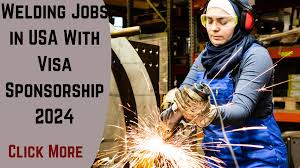With the new year bringing new opportunities, many skilled individuals around the world may be considering their career options for 2024. If you have experience and training as a carpenter and are interested in relocating to Canada, this post discusses the process for obtaining a work permit as a carpenter through employer sponsorship in Canada.
The Demand for Carpenters in Canada
One of the primary factors driving employer interest in sponsoring carpenters through the Temporary Foreign Worker Program is the ongoing demand for skilled carpenters across many regions and industries in Canada. According to recent statistics and projections from the Government of Canada and industry groups:
- Canada is expected to need over 6,000 new carpenters per year through 2028 to meet demand from ongoing construction projects in areas like residential and non-residential building, infrastructure, and industrial markets.
- Growth in the carpentry occupation is predicted to be 10% over the next decade, outpacing the average growth rate of 5% among all other occupations in Canada.
- Demand for carpenters is especially strong in major cities like Toronto, Vancouver, Calgary, Edmonton, and Ottawa where large-scale construction activity is common. However, opportunities also exist in smaller communities across Canada.
This sustained demand is being driven by ongoing population growth in Canada which is increasing the need for new housing starts and commercial/industrial developments. Economic expansion is also driving more infrastructure projects that require skilled carpentry work. As a result, employers actively sponsoring foreign carpenters through 2024 and beyond should have job opportunities available.
What is an LMIA and Why is it Needed?
For most skilled occupations including carpenters, foreign nationals require a valid Labor Market Impact Assessment (LMIA) from Employment and Social Development Canada (ESDC) before they can obtain an open work permit for a carpenter job in Canada.
The LMIA is the document that confirms there is a need for a foreign worker in a specific occupation and that no Canadian or permanent resident is available to fill the job. It is issued by ESDC after an employer has demonstrated genuine recruitment efforts to hire locals and justifies why a foreign carpenter is needed.
LMIA Exemptions for Some Countries
While most carpenters require an LMIA-supported work permit, exemptions do exist under certain Free Trade Agreements (FTAs) that Canada has signed. For example, carpenters from the United States, Mexico, and Chile may be eligible for an LMIA-exempt work permit under provisions in the Canada-United States-Mexico Agreement (CUSMA) and Canada-Chile FTA respectively.
In these cases, employers still need to make a Labor Market Benefit Plan submission to ESDC confirming recruitment efforts and justifying the need to hire a foreign carpenter rather than a Canadian or permanent resident. However it allows for a slightly faster permit processing time compared to the standard LMIA route since no assessment of labor market impact is needed.
Required Qualifications and Experience
In addition to obtaining an LMIA or qualifying for an exemption, foreign carpenters seeking employment through the Temporary Foreign Worker Program must demonstrate the required skills and experience specified by the employer in their job offer. The core qualifications required by most carpentry employers in Canada include:
- A post-secondary certificate/diploma or apprenticeship certification in carpentry from their home country. Experience as a journeyman carpenter is preferred.
- Minimum of 2 years of full-time paid experience working as a carpenter on relevant projects like residential/commercial construction.
- Proficiency with hand and power tools commonly used by carpenters such as hammers, saws, drills, and levels. Experience with machinery like table saws and nail guns is also valued.
- Strong knowledge of building materials, blueprint reading, site layout, and installation of various structures and components.
- Ability to perform tasks like framing, roofing, installing doors/windows, drywalling, stairs/railings. Experience with concrete forming is considered an asset.
- Physical stamina for working outdoors in all weather conditions and lifting/carrying heavy loads.
- Work independently as well as part of a team while following safety protocols.
Applying for the Work Permit
So in summary, the typical steps for a foreign carpenter to obtain a work permit through employer sponsorship in Canada are:
- Get a Job Offer: Find an advertised carpenter position in Canada and meet all qualifications. Many reputable construction firms actively recruit skilled trades internationally.
- Apply for LMIA/Exemption: The employer applies to ESDC for either an LMIA confirming labor market need, or an LMIA exemption under a trade agreement.
- Get a Medical Exam: Receive a completed medical exam confirming good physical/mental health without excessive demands on social services.
- Pay Fees & Submit Application: Pay the CAD$550 processing fee and submit a complete work permit application packaged by the employer through IRCC’s online portal.
- Training/Certification: If required for the position, complete any professional certifications/language tests before the application is finalized.
- Work Permit Decision: Processing time is 4-6 months normally. If approved, a multi-year open work permit is issued.
- Travel to Canada: Once the permit is approved, travel within the validity dates to begin employment. A work visa is required to board flights to Canada.
Getting permanent residency through programs like Canada’s Express Entry system is also possible after a period of work experience in Canada, allowing for a pathway to Canadian citizenship.
Common Challenges to Consider
While there are opportunities, a few challenges are worth noting for foreign carpenters considering coming to work in Canada through employer sponsorship:
- Competition for Limited Permits: The demand for LMIA-supported permits exceeds the number approved by ESDC annually, so not all applicants receive a positive decision.
- Language Requirements: While English/French fluency may not be mandatory for some carpentry jobs, it provides advantages and is an asset when qualifying under Express Entry.
- Cost & Delay Risks: Processing delays or rejections mean losing the medical/fees which cost over CAD$550 per applicant and any relocation expenses incurred to date.
- Potential Red Tape: Strict compliance with all conditions of the work permit like maximum work hours and employers are required to avoid status issues.
- Job/Location Changes Restricted: Switching employers or locations without permission is not allowed during the permit validity.
- Dependent Restrictions: Only spouses/common-law partners qualify to apply along with the worker on most initial applications, not children.
Careful consideration of these potential challenges alongside one’s personal/family situation is prudent before embarking on the process of relocating to Canada through employer sponsorship. Reputable international recruiters can also help navigate specifics.
Qualifying under Express Entry
A long-term path for permanent residency involves potentially qualifying under one of Canada’s immigration programs Express Entry after accumulating some work experience in Canada as a sponsored carpenter.
Under Express Entry, trade-related work experience acquired in Canada through work permit sponsorship may be considered eligible non-Canadian work experience towards Express Entry Comprehensive Ranking System (CRS) points.
One year of full-time skilled work is normally required to qualify. However, compulsory trade certification/licensing requirements in some Canadian provinces may need to be fulfilled in order to have work experience counted as ‘skilled’. Two years is a more realistic target timeframe.
Once criteria is met, a profile can be created in Express Entry and undergo periodic draws where the highest ranking applicants receive Invitations to Apply for permanent residence. The average CRS score required currently ranges between 470-500 points.
In addition to work experience factors, language ability, education, and any other admissions factors like a job offer further boost CRS scores and chances of receiving an invite within 1-2 years typically for carpenters through this pathway.
Permanent residency then paves the way for sponsorship of remaining family members, access to provincial healthcare/services, and eventually Canadian citizenship if desired. Careful tracking of progress is key to maximizing chances of transitioning from work permit to permanent resident status.
Provincial Nominee Programs
Provincial Nominee Programs (PNPs) run by each Canadian province/territory also offer an alternative option to gain permanent residency in 1-2 years through employment in certain in-demand skilled trades like carpentry.
Under PNP streams, nominations from the respective provincial government carry extra CRS points (600 under several programs) that make an Express Entry profile very competitive. Many also have a lower entry point threshold than regular Express Entry draws.
Key PNP streams for carpenters include:
- Alberta Immigrant Nominee Program Occupations In-Demand stream
- Saskatchewan Intra-Company Transfer stream
- Manitoba Provincial Nominee Program Skilled Worker category
- Ontario Human Capital Priorities stream
These require a job offer in the respective province along with minimum education and language scores. Caribbean carpentry experience could also qualify under Atlantic Immigration Pilot programs to New Brunswick or Nova Scotia directly.
Express Entry combined with a strong PNP stream may allow permanent residency to be obtained much faster, in under 12 months in some cases, compared to the standard Express Entry route alone which historically takes 1-2 years on average. For those specifically interested in certain Canadian provinces like Alberta, Manitoba or Atlantic Canada, investigating PNP criteria is worthwhile alongside a federal Express Entry profile.






